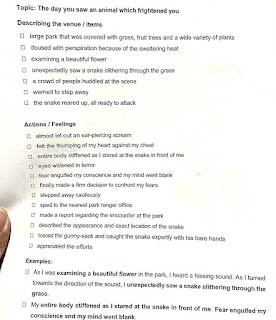 BMC Ecology wants to see your visual interpretations of ecological processes. The “BMC Ecology Image Competition 2012” is open to everyone affiliated with a research institution. So from muddy-boots fieldworkers to desk-based computational modellers, we want to know how you see the science of ecology.
BMC Ecology wants to see your visual interpretations of ecological processes. The “BMC Ecology Image Competition 2012” is open to everyone affiliated with a research institution. So from muddy-boots fieldworkers to desk-based computational modellers, we want to know how you see the science of ecology.
Entries should depict a specific ecological interaction, and should be submitted to one of five categories that reflect the editorial sections of the journal.
We will consider all images from photos to data visualizations, or a mixture of both – as long as they are striking, meaningful, and creative. The winner of each category will be chosen by each of the journal’s Section Editors (Michel Baguette, Michael Bonsall, Jean Clobert, Nick Royle and Josef Settele). The categories are:
Behavioural and physiological ecology
Conservation ecology and biodiversity research
Community, population, and macroecology
Landscape ecology and ecosystems
Theoretical ecology and models
The overall winner will receive a cash prize of £250 (€300/$400) and their image will be used as the journal’s main promotional image for 2013 – featuring prominently on the journal ‘s website and in its printed and online marketing material. The runner-up will receive £100 (€125/$150), and additional prizes of £50 (€65/$75) will be awarded for those images selected by the Section Editors that best represents their section.
Please ensure that you provide a description of the ecological processes depicted in your image, as well as the category you feel the image best embodies. Please also ensure that you correctly cite any data sets that were used to generate your image.
In line with our policies on Open Access, entry to the competition implies release of the images under a creative commons licence, to allow file sharing with proper attribution. We strongly encourage everyone to upload their images onto our Flickr group page “Imaging Ecology”, where you can view other entries and post your comments.
We would also encourage entrants to submit their images for consideration by our partners at the Biology Image Library, subject to peer-review.
All entries should include as the subject line “BMC Ecology Image Competition 2012”, together with the following completed form:
Name:
Section:
Image Description (Max. 300 words):
File type:
Data attribution (if applicable):
Affiliation:
Contact details of Research Institute:
I agree to release this image under a Creative Commons License: Y/N
I would like my image to be considered for inclusion in the Biology Image Library: Y/N
Please attach your image entry to your email, which should conform to the following criteria:
Images must be a minimum 300dpi (1831 x 1831 pixels for a raster image).
Allowable formats - EPS, PDF (for line drawings), PNG, TIFF, JPEG, BMP, DOC, PPT
Please note that it is the responsibility of the author(s) to obtain permission from the copyright holder to reproduce figures or tables that have previously been published elsewhere.
Help us spread the word by downloading a flyer and displaying it prominently in your research department. We’ll also be posting regular updates on the competition throughout the coming months, so don’t forget to keep up to date by reading ourblog or by following us on Twitter @BMC_series using #ImagingEcology
Closing date for entries is 1st December 2012 and winners will be announced in the New Year.
We look forward to receiving your entries!

Posted by Simon Harold at
09:58





